Choosing the top Japanese cleaver knife for your kitchen can...
Read More
A boning knife is a type of kitchen knife that is designed for removing bones from meat, poultry, and fish. It has a thin, sharp blade that is usually between 5 and 7 inches long and a pointed tip that makes it easy to maneuver around bones and joints. Boning knives can come in various shapes, such as flexible and stiff blades, and are often used by professional chefs and home cooks alike. With its specialized design, a boning knife can help make the process of deboning meat more efficient and precise.
What is the Japanese equivalent of a boning knife?
The Japanese equivalent of a boning knife is called hankotsu. It is a traditional Japanese-style knife used for deboning and filleting meat and poultry. The hankotsu knife typically has a short, thick blade that tapers to a pointed tip, which allows for precise cuts around bones and joints. It is also designed to have a more curved shape than a Western-style boning knife, which makes it well-suited for working with different types of meat and poultry that have varying degrees of hardness and toughness. Like many Japanese-style knives, hankotsu knives are made from high-quality steel and are known for their sharpness and durability.
Should a boning knife be sharp?
Yes, a boning knife should be sharp to ensure that it can easily cut through meat, cartilage, and bone while maintaining control and accuracy. A sharp boning knife will make the task of deboning and filleting much easier and safer. A dull boning knife can slip and cause injury or make it more difficult to get the job done. However, it’s important to note that sharp knives should always be handled with care and proper technique to avoid injury.
Can a boning knife cut through bone?
While a boning knife is designed to remove bones from meat or fish, it is not intended to cut through bone. Attempting to cut through bone with a boning knife could damage the blade or result in injury to the user. Instead, it’s best to use a specialized meat cleaver or bone saw to cut through bones. A boning knife is designed to work around the bone and separate the meat from the bone, rather than cutting through the bone itself.
What is a boning knife used for?
A boning knife is used for removing bones from meat, poultry, and fish. It has a thin, sharp blade that allows the user to maneuver around bones and joints with ease, separating the meat from the bone while minimizing waste. The pointed tip of the blade also allows for precise cuts in hard-to-reach areas, such as around the ribs or along the spine.
Boning knives are commonly used by professional chefs and home cooks alike to prepare meats for cooking, and can also be used for filleting fish or trimming fat from meat.
What is the best size boning knife?
The best size for a boning knife will depend on personal preference and the types of tasks it will be used for. Boning knives typically come in blade lengths ranging from 5 to 9 inches, with 6-inch and 7-inch blades being the most common.
A 6-inch blade is a good all-purpose size for home cooks, as it is long enough to handle most cuts of meat while still being easy to control. A 7-inch blade may be a better choice for those who frequently work with larger cuts of meat, while a 5-inch blade may be better for more delicate work such as filleting fish.
Ultimately, the best size for a boning knife will depend on your specific needs and preferences. It’s important to choose a size that feels comfortable in your hand and allows you to work efficiently and effectively.
What can I substitute for boning knife?
While a boning knife is the ideal tool for deboning meat or fish, there are a few other knives that you can use as substitutes if you don’t have a boning knife on hand:
- Chef’s knife: A chef’s knife can be used for basic deboning tasks, but it may not be as precise or flexible as a boning knife.
- Fillet knife: A fillet knife can be used to remove bones from fish or poultry, but it may not be as effective on larger cuts of meat.
- Paring knife: A paring knife can be used for small, delicate deboning tasks, such as removing bones from chicken wings or trimming small cuts of meat.
However, it’s important to note that using a substitute knife may not provide the same level of precision or control as a boning knife, and could potentially lead to more waste or uneven cuts. If you frequently work with meat or fish, investing in a good quality boning knife is recommended.
Benefits of using boning knife
There are several benefits to using a boning knife:
- Precise cuts: A boning knife’s narrow, pointed blade allows for precision when cutting around bones and joints, resulting in more accurate and efficient cuts.
- Versatility: Boning knives can be used for a variety of tasks, from trimming meat to filleting fish, making them a versatile tool to have in the kitchen.
- Control: The narrow, flexible blade of a boning knife allows for better control, making it easier to navigate around bones and other obstacles when cutting meat.
- Reduced waste: Using a boning knife allows you to cut closer to the bone, resulting in less meat waste and more usable meat.
- Improved safety: A sharp boning knife is safer to use than a dull knife, as it requires less pressure to make cuts, reducing the risk of slipping and injury.
Overall, a boning knife is an essential tool for anyone who frequently works with meat or fish. It provides precision, control, and versatility, making it easier to achieve professional-level cuts and reduce waste in the kitchen.
What is the disadvantage of boning knife?
While a boning knife is a useful tool for many meat-related tasks, it does have some potential disadvantages:
- Limited versatility: Boning knives are designed specifically for removing bones from meat and may not be as versatile as other kitchen knives.
- Difficulty with precision cuts: The stiff and sturdy blade of a boning knife may make it more difficult to make precise cuts, particularly on smaller or more delicate pieces of meat.
- May require frequent sharpening: Since boning knives are used to cut through tough bone and cartilage, their edges may dull more quickly than other kitchen knives, and may require frequent sharpening to maintain their effectiveness.
- Requires some skill: Boning knives require a certain level of skill and technique to use properly, particularly when cutting around joints and bones. Inexperienced users may struggle to use the knife effectively and may be at risk of injury if they are not careful.
What is the difference between a boning and fillet knife?
Boning knives and fillet knives are both specialized kitchen knives used for working with meat and fish, but they have some key differences in their design and function.
Boning knives are used for removing bones from meat, poultry, and fish. They typically have a thin, straight blade that is pointed at the tip, making it easier to maneuver around bones and joints. Boning knives also have a sturdier, less flexible blade than fillet knives, which allows them to handle denser meat and poultry more effectively.
Fillet knives, on the other hand, are used for filleting fish, or removing the skin and bones from the flesh. They typically have a longer, more flexible blade that allows them to follow the contours of the fish and make precise cuts without damaging the meat. Fillet knives are usually thinner and more flexible than boning knives, which makes them better suited for working with delicate fish flesh.
In summary, while both knives are used for working with meat and fish, boning knives are better for removing bones from denser meats and poultry, while fillet knives are better for filleting fish and working with delicate fish flesh.
How to use boning knife safely
Here are some tips on how to use a boning knife safely:
- Keep your fingers away from the blade: Place your non-dominant hand on the meat or fish to stabilize it, but keep your fingers away from the path of the blade.
- Use a cutting board: Always use a cutting board when using a boning knife to prevent accidents and damage to your countertops.
- Make small, precise cuts: Use the tip of the knife to make small, precise cuts around the bone, rather than trying to force the knife through the bone.
- Work slowly and carefully: Take your time and work slowly and carefully when using a boning knife, especially if you are new to using this type of knife.
- Keep the knife sharp: A dull knife is more dangerous than a sharp one, as it requires more force to make cuts and can slip more easily. Keep your boning knife sharp to ensure smooth and efficient cuts.
- Use proper storage: When not in use, store your boning knife in a safe place, such as a knife block or a sheath, to prevent accidental cuts and to protect the blade from damage.
Factors to consider when choosing the best boning knife
When choosing the best boning knife, there are several factors to consider:
- Blade shape: Boning knives come in different blade shapes, such as curved, semi-flexible, and stiff. Consider the type of meat you will be working with to determine the blade shape that best suits your needs.
- Blade length: Boning knives typically range in length from 5 to 7 inches. Choose a blade length based on the size of the meat you will be working with.
- Blade material: High-quality blade materials include stainless steel, high-carbon steel, and ceramic. Each material has its own advantages and disadvantages, so consider your needs and preferences when choosing the material.
- Handle material: The handle of the boning knife should be comfortable to hold and provide a secure grip. Popular handle materials include wood, plastic, and stainless steel.
- Blade flexibility: The flexibility of the blade is important when working with different types of meat. More flexible blades are better for fish and poultry, while stiffer blades are better for beef and pork.
- Price: Boning knives come in a range of prices, from budget-friendly to high-end. Consider your budget and the level of use you anticipate to determine the best price point for your needs.
How to clean boning knife
Proper cleaning of a boning knife is important to maintain its sharpness and longevity. Here are the steps to follow to clean a boning knife:
- Rinse the knife with hot water immediately after use. Do not let the food particles sit on the knife for a long time as it can cause corrosion or discoloration.
- Use a soft-bristled brush or sponge to clean the blade gently. You can also use a mild detergent or dish soap to remove any stubborn stains or food particles.
- Rinse the blade thoroughly with hot water and dry it with a clean towel.
- To remove any remaining moisture or bacteria, use a clean towel to wipe the blade dry.
- Store the boning knife in a knife block or a sheath to protect the blade from any damage or scratches.
- Avoid using abrasive cleaning tools or harsh chemicals that can damage the blade’s finish or sharpness.
- Periodically sharpen the boning knife to maintain its sharpness and cutting ability.
How to sharpen boning knife
Sharpening an offset serrated knife can be a bit tricky, as the serrations make it more difficult to sharpen than a straight-edged knife. Here are some steps to follow:
- Get a serrated knife sharpener: Look for a serrated knife sharpener that is specifically designed to sharpen serrated knives, as regular sharpening stones or honing steels may not work as effectively.
- Place the knife in the sharpener: Place the serrated knife in the sharpener, making sure that the teeth of the blade fit snugly into the sharpening slots.
- Sharpen the serrations: Gently pull the knife back and forth through the sharpening slots, making sure to sharpen each serration. Be careful not to apply too much pressure, as this can damage the blade.
- Repeat the process: Depending on the dullness of the blade, you may need to repeat the sharpening process several times.
- Test the blade: After sharpening, test the blade to see if it is sharp enough. You can do this by gently slicing through a piece of bread or other soft food.
- Clean the knife: Once you’re finished sharpening the knife, clean it using the steps outlined in the previous answer.
It’s important to note that serrated knives don’t need to be sharpened as often as straight-edged knives, as the serrations help the knife cut through food more easily. However, regular maintenance can help extend the life of your knife and ensure that it continues to perform at its best.
How to maintain boning knife properly
Proper maintenance is essential for keeping your boning knife in good condition and ensuring that it lasts for a long time. Here are some tips for maintaining your boning knife:
- Hand washing: Always wash your boning knife by hand with soap and warm water. Never put it in the dishwasher, as the high heat and abrasive detergents can damage the blade.
- Drying: After washing, dry your knife thoroughly with a clean towel to prevent rust from forming.
- Storage: Store your boning knife in a knife block or on a magnetic strip to protect the blade and prevent it from getting damaged.
- Sharpening: Regularly sharpen your boning knife with a sharpening stone or honing steel to maintain its edge. A dull knife can be dangerous to use and may damage the meat.
- Oil the blade: If you live in a humid environment or store your knife for long periods of time, it’s a good idea to lightly oil the blade with food-grade mineral oil. This will help prevent rust and keep the blade in good condition.
By following these tips, you can ensure that your boning knife stays in good condition and is always ready to use when you need it.
Troubleshooting about boning knife
Here are some common issues that may arise with a boning knife and their solutions:
- Dull blade: If the blade of the boning knife is dull, it may not be able to make clean cuts through meat or other food items. The solution is to sharpen the blade using a sharpening stone or honing rod.
- Uneven cuts: If the cuts made with the boning knife are uneven or ragged, it may be due to poor technique or a blade that is not sharp enough. Practice and sharpening the blade can help improve the cutting performance.
- Rust or corrosion: If the boning knife is not properly cleaned and dried after use, it may develop rust or corrosion on the blade. The solution is to clean the blade thoroughly and dry it completely after each use, and store the knife in a dry place.
- Handle issues: If the handle of the boning knife is loose or uncomfortable to grip, it may cause safety issues or make it difficult to use the knife effectively. The solution is to tighten or replace the handle as needed, or to choose a knife with a more comfortable handle design.
- Blade damage: If the blade of the boning knife becomes chipped, cracked, or otherwise damaged, it may not be safe or effective to use. The solution is to replace the knife or have it professionally repaired, depending on the extent of the damage.
Boning knife - FAQs
What is a boning knife used for?
A boning knife is used for removing bones from meat, poultry, and fish, as well as for trimming fat and skin.
What is the difference between a boning and a fillet knife?
While both are designed to remove bones from meat and fish, a boning knife has a thicker and sturdier blade that can handle tougher cuts of meat, while a fillet knife has a more flexible and thinner blade that is better suited for removing bones from delicate fish.
Can a boning knife be used for other tasks?
While a boning knife is specifically designed for removing bones, it can also be used for trimming fat and skin, as well as for cutting and slicing meat.
How should I store my boning knife?
When not in use, a boning knife should be stored in a safe place, such as a knife block or a sheath, to prevent accidental cuts and to protect the blade from damage.
Can a boning knife cut through bone?
While a boning knife is designed to remove bones, it is not intended to cut through large, thick bones. For that, a cleaver or a bone saw is more appropriate.
What is the best size for a boning knife?
The best size for a boning knife depends on the type of meat and the size of the bones you will be working with. A smaller, more maneuverable knife may be more appropriate for smaller cuts of meat and fish, while a larger, heavier knife may be better for tougher cuts and larger bones.
Do I really need a boning knife?
If you frequently work with meat, poultry, or fish, then a boning knife can be a useful tool to have in your kitchen. It allows you to remove bones and joints from meat with precision and can also be used for trimming fat or filleting fish. However, if you rarely work with meat, poultry, or fish, then a boning knife may not be a necessary tool for your kitchen. In that case, a standard chef’s knife may be sufficient for most of your cutting needs. Ultimately, the decision to purchase a boning knife depends on your individual cooking habits and preferences.
Related Posts
How Can I Choose The Best Boning Knife
HOW TO CHOOSE THE BEST BONING KNIFE: ADVICE AND INSTRUCTIONS ...
Read More10 Best Meat Cleaver You Can Buy
Whether you’re new to the world of cooking or a...
Read MoreWhy Trust Us
You will find what you are looking for at Jody's Bakery. From classic to luxury brands, you'll find both. We will help you to select appliances that fit your needs, budget and lifestyle. Whether you want to stop by to learn more — or plan to make a major purchase — we’ll treat you like family and assist you every step of the way. Shop with us today to receive friendly and experienced help along the way.









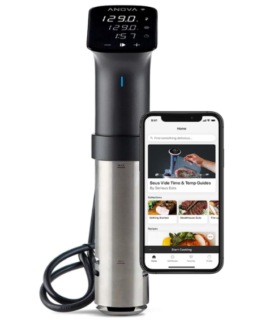
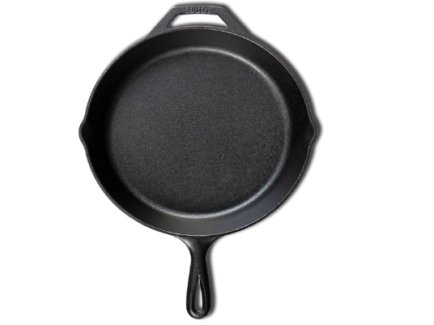

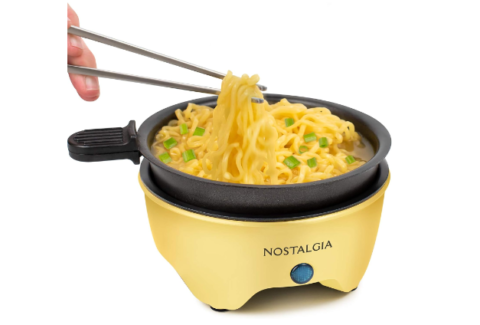
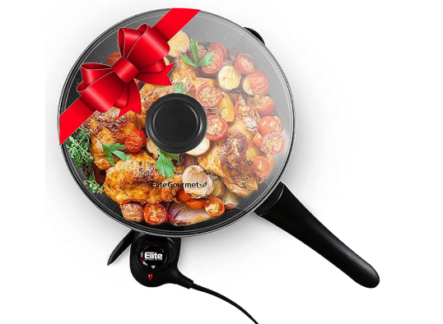
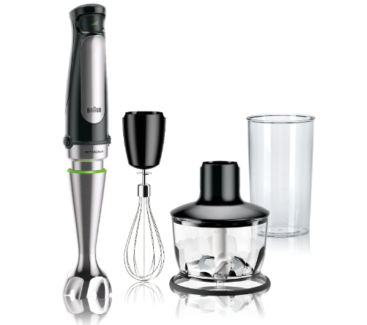

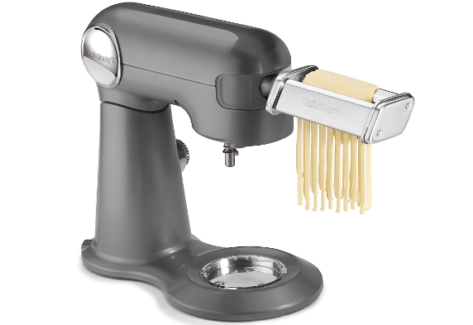
Great job on this article! It was very engaging and informative. I’m eager to hear different viewpoints on this. Click on my nickname for more engaging content.
… [Trackback]
[…] There you will find 99521 more Info to that Topic: jodysbakery.com/what-is-a-boning-knife-used-for/ […]
… [Trackback]
[…] Here you can find 86221 additional Info to that Topic: jodysbakery.com/what-is-a-boning-knife-used-for/ […]
… [Trackback]
[…] Read More Info here to that Topic: jodysbakery.com/what-is-a-boning-knife-used-for/ […]